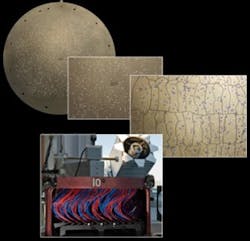Astronomers launch new 3-D galaxy map
The largest ever 3-D map of galaxies and black holes was released by astronomers this week.
The map is the creation of the Sloan Digital Sky Survey III (SDSS-III) an international project mapping the Milky Way. It is the first in a series planned during the six-year project that will create 3-D images from the largest-ever 2-D image of the sky which the SDSS-III released early last year.
Scientists constructed the new 3-D map from the project's first two years of data, which it published recently as Data Release 9 (DR9), making it freely available to astronomers, students, teachers and the public.
The data includes images of 200 million galaxies and spectra of 1.35 million galaxies, including 540,000 spectra of new galaxies from when the universe was half its present age.
Spectra show how much light a galaxy gives off at different wavelengths. Because this light is shifted to longer, redder, wavelengths as the universe expands, spectra allow scientists to calculate how much the universe has expanded since the light left each galaxy.
Images of the galaxies, together with these measurements of expansion, were combined by SDSS-III scientists to create the 3-D map released with DR9.
The data are available now on the SDSS-III website here.
Fascinated by astronomy? Here are three recent news stories from Vision Systems Design you may also be interested in.
1. Telescope captures deepest space image on record
The European Southern Observatory’s (ESO; Garching, Germany) Vista telescope has created the widest deep view of the sky ever made using infrared light.
2. Data center to create 3-D map of the stars
A new data center at the University of Cambridge Institute for Astronomy (IoA; Cambridge, UK) will process imaging data from a satellite to create the first three-dimensional map of more than a billion stars.
3. Telescope captures images of the Whirlpool galaxy
The Lowell Observatory has released the first images taken with a 4k x 4k imaging sensor from e2v (Chelmsford, UK) that equips its flagship Discovery Channel Telescope (DCT).
-- Dave Wilson, Senior Editor, Vision Systems Design
